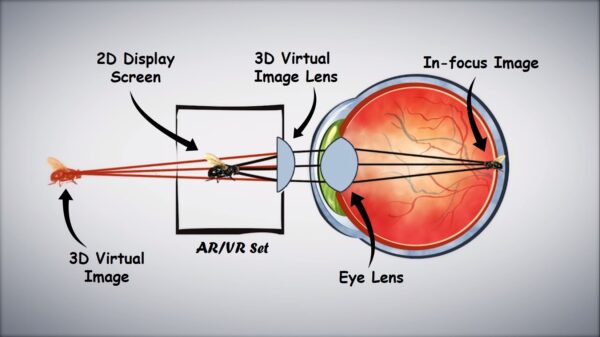Of the 8 visual cues necessary for depth perception, VR provides all but one. Referred to as ‘Convergence and Accommodation’, lack of this particular cue especially for objects up-close induces dizziness and motion sickness, resulting in what technical experts dub, the ‘Vergence-Accommodation Conflict (VAC)’. Eye-tracking technology has made immersive experience smoother, but hasn’t really solved the VAC problem. Groups worldwide are scramblling to find a viable solution, but it is a still long road to the final destination.
The greatest enemy hides in the last place you would ever look

Why Choose Our VR
At NewEyes, we have developed a patented optical technology that mimics our natural eye lens.
Mimicking the Natural Eye Adaptation
Due to the slow nature of the currently researched VR integrable varifocal optics, additional eye-tracking systems are still required. In addition to being complex and expensive, they are trend-setting but not practical or mass affordable. Our lightweight varifocal optics consist of a pair of round liquid tunable lenses that use piezo-electronics to change focus faster than 100 Hz while enabling clear display of objects as close as 20 cm, similar to our natural eye lens accommodation. In addition to a simple configuration, these lenses are almost 10x less expensive compared to other reported solutions. VAC fix also means it is far less strenuous to the eye and hence far more engaging. Even better, they are prescription compatible, making them customizable and mass adoptable.
VR and Adaptive Optics
At this point, the general consensus is that VAC fix is the last logical step in advancement of AR/VR technology hardware and the first towards creating a ‘metaverse’ wherein 3D immersive experience would become a way of learning and networking. In this context, varifocal adaptive optics seems like a viable solution to fixing this unsolved puzzle. ‘Half Dome’ project was undertaken by one of the major tech giant in 2019 to precisely solve this problem using polarization-switched lens-based adaptive optics. But behold, such optical systems can be so much more expensive.
Beyond VR: AR/XR and Rx Smart Glasses
Next generation VR headsets are not our only focus. Since AR glasses and headsets suffer from similar VAC and focal conflicts, our varifocal lenses can be integrated in them to provide a more positive experience. Prescription compatibility alone renders our tunable lenses to be used in standard prescription glasses for nearly two-thirds of myopic, hyperopic, and presbyopic population. In summary, our varifocal technology would revolutionize the vision technology of future and transform the way humans perceive and respond to visual stimuli.

